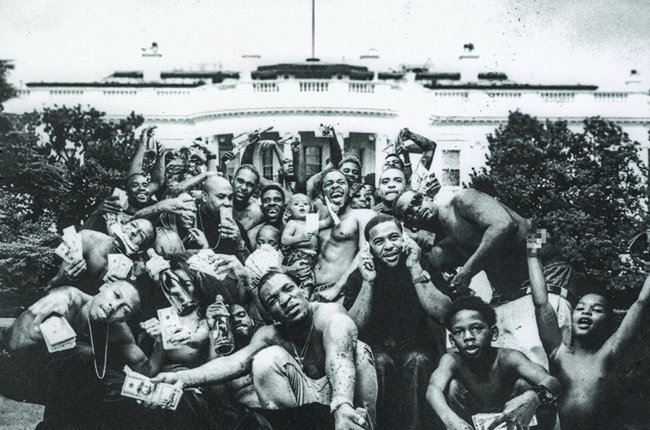Kendrick Lamar’s third album proves to be legendary
April 10, 2015
After a year of building anticipation, Kendrick Lamar’s third album, ‘To Pimp a Butterfly,’ was released on March 15, more than a week ahead of the scheduled release date.
Many wondered how Lamar would be able to surpass the thought provoking and sonically amazing two albums that were ‘Section 80’ and ‘Good Kid, M.A.A.D City.’ However, Kendrick Lamar once again superseded the basal expectations of the masses, producing an album that not only is a fundamentally sound record, but one that may also be one of the most revitalizing and creative albums of all time.
A quick flip through all of the songs on ‘To Pimp a Butterfly’ will not reveal much. The album rivals a novel in its complexity. One must start at the very beginning with the first song on the album, ‘Wesley’s Theory,’ in order to even grasp a basic understanding of Kendrick’s message. ‘Wesley’s Theory’ opens with Lamar taking on the perspective of a foolish young rapper trapped by greed, emphasizing problems that he observes and exemplifying the culture of consumerism that he has thus far avoided.
‘For Free?,’ ‘King Kunta,’ ‘Institutionalized,’ and ‘These Walls’ all ultimately build up to the crushing track that is “u.” The complete opposite of the happy and carefree song “i,” Lamar criticizes himself in a hotel room, with a voice half broken and verses interrupted by sobbing and the clinking of bottles. The song shows us the inner monologue that Kendrick faces every day, and the self-doubt that he is still struggling to overcome.
Every song on the album opens up a barrel of existential questions that would take scholars years to debate. In ‘How Much A Dollar Cost,’ Kendrick analyzes how the worth of money has changed for him on his rise to fame, asking the fundamental question of how much money means to him. ‘i,’ the single released before the album that had many questioning if Kendrick had now turned to attempting to please the radio, is a more raw and unaltered live version on the album, and it serves as a necessary lift-up after all the soul-churning questions that Lamar asks throughout the album.
Finally, the record ends with ‘Mortal Man,’ which has Lamar questioning the dedication of his fans, asking them if they will remain by his side when the issues that he is tackling get real. After the song is over, Kendrick interviews Tupac about the future of the African-American community, but ends up with more questions than answers. The album finishes out with Kendrick calling out “Pac? Pac? Pac?” with nothing but silence in reply.
This album immediately destroys any possible attempts at comparison with Kendrick’s previous works. The heavy jazz production influence is built upon with elements of funk and soul, constructing a beautiful complexity of instrumentals that lend themselves to each song. It is a new work for a new age, an age where Lamar questions the very nature of the things that brought him to where he is now, as well as the extent of his duties to his community and the culture that made him. Although it has no hit songs, and is clearly not meant for a very wide audience, Lamar deserves respect and admiration for refusing to give in to the industry, giving the people what they needed instead of what they wanted.
Ultimately, ‘To Pimp A Butterfly’ will go down as one of the most legendary albums of any genre of all time.






